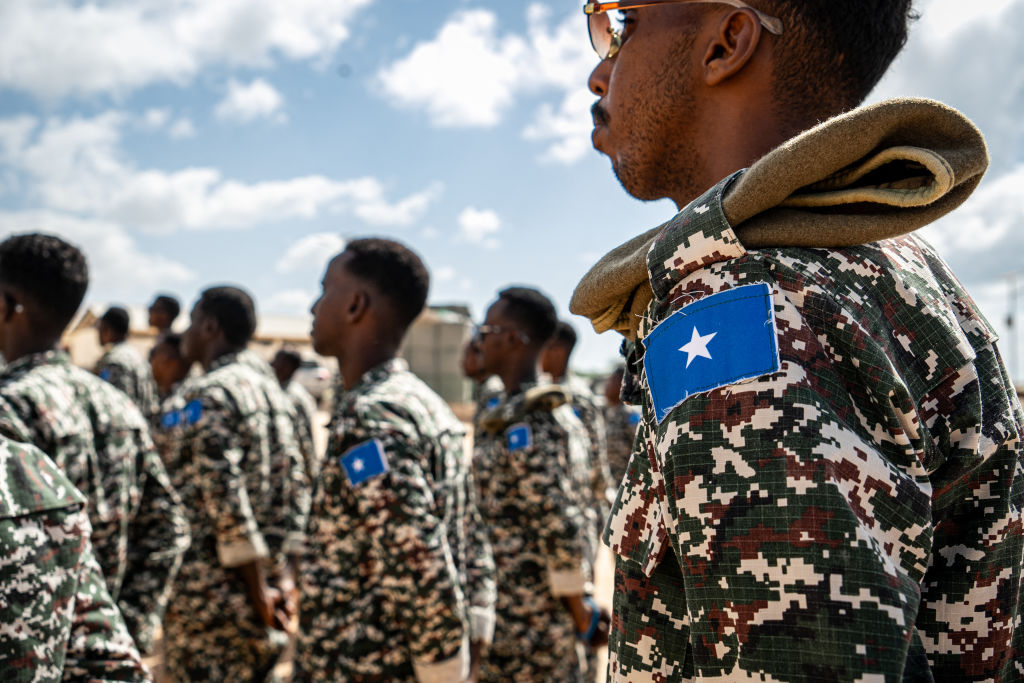
ADF STAFF
Al-Shabaab in late July launched nearly simultaneous attacks on the Somali villages of Buulo Xaaji and Harboole and targeted three military bases where members of the Somali National Army and Jubaland State paramilitary fighters were stationed.
Jubaland President Ahmed Mohamed Islaam said more than 135 al-Shabaab fighters were killed and more than 80 wounded and “taken as prisoners of war” in the ensuing battle, Agence France-Presse reported. According to the SITE monitoring group, al-Shabaab said it killed 71 security forces and wounded more, although those claims could not be verified.
Jubaland is a longtime hotbed of al-Shabaab activity. Its proximity to the major port city of Kismayo makes it strategically significant for government forces and terrorists. Control of this area allows al-Shabaab to facilitate smuggling operations and influence local communities.
“The successful repulsion of the al-Shabaab attack demonstrates the increasing tactical proficiency of Somali government forces,” analyst Avery Warfield wrote in Geopolitical Monitor. “By proactively abandoning the bases and encircling the militants, the Somali forces minimized their casualties while inflicting significant losses on the enemy. This strategy indicates improved intelligence capabilities and coordination among Somali military units.”
The attacks also highlight al-Shabaab’s resilience against military pressure and underscore the fears of experts, including the African Union Transition Mission in Somalia (ATMIS) Head Ambassador Mohamed el-Amine Souef, who believe Somali security forces will need the continued help of international forces after the mission leaves the country at the end of the year.
“The political ambitions around the transition consistently have not matched ground realities, which then causes delays,” Omar Mahmood, senior Eastern Africa analyst at the International Crisis Group, told The East African newspaper in mid-July.
The Somali National Army has taken over 22 bases from ATMIS and regained some territory, but Mahmood said he believes more time is needed to continue to develop the Somali security sector.
“It is likely Somalia will still require foreign troops assistance for at least the next couple of years in order to avoid a security reversal,” Mahmood added.
Ruth Namatovu, a research fellow at the Institute of Research and Policy Integration in Africa at Northern Illinois University, told The East African newspaper that the drawdown has “no clear plan, different stakeholders have different agendas.”
Namatovu said that historically, the period when security responsibilities are handed off from an international mission to local forces is particularly perilous. “Somalia is trying to dodge a similar end result by minimizing the risks of getting rid of the foreign forces at once at the time when al-Shabaab has become more resilient, sophisticated and grown its force in terms of numbers,” she said.
According to an AU assessment seen by The East African, al-Shabaab is increasingly adept at drone use and is creating new ways to use improvised explosive devices in its attacks. Analysts say the terror group has an adequate intelligence system and uses open-source geographical data to plot assaults.
According to the AU, al-Shabaab has gradually formed a pan-East African force of foreign fighters known as Muhajirin. Most Muhajirins are Ethiopians, Kenyans and Tanzanians, although there are also but also include Burundian, Congolese, Rwandan and Ugandan fighters.
The AU assessment reports that al-Shabaab also has established ties with the Allied Democratic Forces, a Ugandan group that also terrorizes the eastern Democratic Republic of the Congo.
As fighting between international forces and al-Shabaab continues, the Somali government is taking steps to eradicate online extremist content. It is targeting websites and social media accounts linked to the group with help from technology companies and the National Intelligence and Security Agency.
“It was a difficult task when we started, it needed knowledge, skills and a lot of work,” Somalia’s Deputy Information Minister Abdirahman Yusuf al-Adala told Voice of America in March. “We trained people with the necessary skills, special offices have been set up, equipment has been made available, and legislation has been passed by the parliament. More than a year later, we are in a good position, we believe we have achieved many of our targets.”
A major offensive against al-Shabaab by government forces and local clan militias in 2022 led to a relative lull in the terror group’s activities. The calm ended in March when the group attacked a popular hotel near the presidential palace in Mogadishu.
The post Al-Shabaab Attacks Increase in Somalia Amid ATMIS Troop Drawdown appeared first on Africa Defense Forum.










